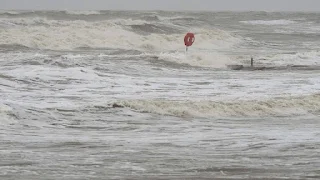
Mexico’s Nationwide Climate Service declared a state of alert on Wednesday, predicting Tropical Storm Alberto would make landfall on Thursday.
The storm, which would be the first within the Mid-Atlantic area of the 2024 season, is predicted to hit daybreak at daybreak on Thursday, Alejandra Méndez Girón, common coordinator of the climate service, stated at a information convention. The state lands in Tamaulipas, positioned within the northeastern a part of the nation.
The official defined that the storm started within the Gulf of Mexico, 195 kilometers northwest of Frontera and 235 kilometers northwest of Tabasco.
The tropical storm is predicted to accentuate, with wind speeds reaching 63 to 118 kilometers per hour, and its heart is positioned about 295 kilometers east of the Panuco River in northern Veracruz state.
Tropical Storm Alberto shaped on Wednesday within the southwestern Gulf of Mexico, about 300 kilometers east of Tampico, Mexico, and about 480 kilometers southeast of Brownsville, Texas.
In accordance with the Nationwide Hurricane Heart in Miami, most wind speeds reached 65 kilometers per hour.
Tropical storms are characterised by sustained winds of 62 to 117 km/h, and if wind speeds exceed common, the storm turns into a hurricane.
Tropical storm warnings have been issued for the Texas coast from the San Luis Move south to the mouth of the Rio Grande and for the northeastern coast of Mexico from the mouth of the Rio Grande south to Tecolutla.
The storm is predicted to strengthen barely on Wednesday earlier than making landfall on Thursday, the Nationwide Hurricane Heart stated.
“As soon as the middle strikes inland, it’s anticipated to weaken quickly and Alberto will seemingly dissipate over Mexico on Thursday,” the middle stated.
Most rainfall of 51 centimeters is feasible within the highlands of the Mexican states of Coahuila, Nuevo Leon and Tamaulipas, and the middle stated flash flooding is feasible and mudslides are attainable in some areas.
The U.S. Climate Service stated the primary hazard dealing with the south Texas coast is flooding from heavy rainfall.
Flash flooding, tornadoes and vertical wind vortices are “extremely attainable” alongside the south Texas coast, the climate service stated Wednesday.
NOAA expects the hurricane season, which begins June 1 and runs by November 30, to be properly above common with 17 to 25 named storms, with as many as 13 anticipated hurricane. .
